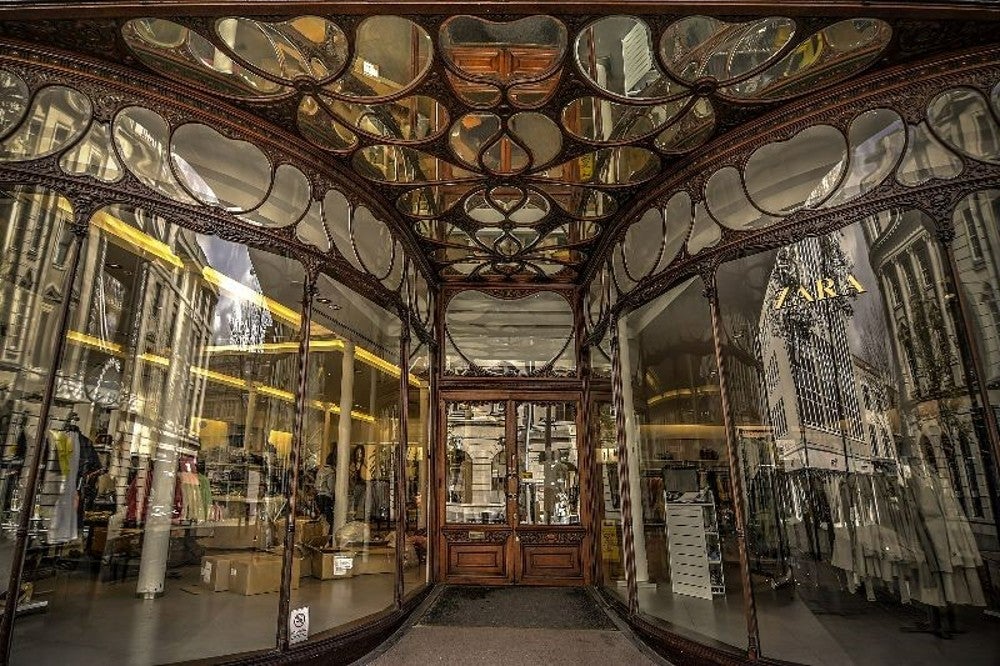Calls for imaginative reuse of stores facing disuse, decay or demolition
Save Britain’s Heritage says department stores have been hit by the pandemic and changing shopping patterns, but the buildings can be saved.

Your support helps us to tell the story
From reproductive rights to climate change to Big Tech, The Independent is on the ground when the story is developing. Whether it's investigating the financials of Elon Musk's pro-Trump PAC or producing our latest documentary, 'The A Word', which shines a light on the American women fighting for reproductive rights, we know how important it is to parse out the facts from the messaging.
At such a critical moment in US history, we need reporters on the ground. Your donation allows us to keep sending journalists to speak to both sides of the story.
The Independent is trusted by Americans across the entire political spectrum. And unlike many other quality news outlets, we choose not to lock Americans out of our reporting and analysis with paywalls. We believe quality journalism should be available to everyone, paid for by those who can afford it.
Your support makes all the difference.The beautiful buildings housing department stores whose trade has been punished in the pandemic can be rescued and given new uses, a report says.
A decade of online shopping and the impact of Covid-19 have brought a wave of high street closures, according to a report by conservation group Save Britain’s Heritage. It considers 18 buildings at serious risk of being permanently lost, along with 14 that have been rescued and revived.
The report states the value of these sites which may be facing demolition or decay is that “department stores make up some of the finest and most socially significant buildings on British high streets” and the race is now on to put life back into them.
It adds: “Designed to impress and inspire, they are of great architectural merit and stand as a monument to the historic prosperity of their town.
“They are deeply connected with personal histories, as places where generations of people have gathered, worked, even celebrated their weddings.”
Liverpool has twice staged an art festival in two of its old department stores.
A former Debenhams store in a prominent brick and terracotta building overlooking Bournemouth’s Pleasure Gardens has reopened as Bobby’s.
The unlisted building is now a retail and workspace hub with a restaurant and art gallery, and even has space for the local knitting circle.
The store shut down as part of the nationwide Debenhams closures in May 2021, but developers Verve Properties have been “imaginative in their ideas for keeping the building in active use”, the report states.
It has a varied mix of community-focused uses which “seems most faithful to the original department store – (as) a place where people from all walks of life can gather and enjoy themselves”, while a keen sympathy for the building’s history has also been displayed.
The Bobby’s name has been reinstated on the facade, a modern canopy has been removed and copper domes have been restored.
The Boots building in Nottingham, created by architect Alfred Nelson Bromley, complete with its Grade II* listed art nouveau windows, has been restored.
Beales in Bolton, a partly Grade II* listed mock-Tudor building in a conservation area, which closed in 2020, has been subdivided for retail. A menswear store and a dessert cafe are now open and there are plans for a build-to-rent housing development to be created opposite.
The report authors say the futures of these prominent buildings are being discussed in a new era when large-scale retail is no longer sustainable.
The report adds: “And as these hubs of daily life are erased from the map, local communities feel increasingly disenfranchised.
“Protecting and reviving these buildings is not only a matter of preserving precious and distinctive architecture, it is an opportunity to restore a sense of place.”
Some 30% of UK sales are now online and a surge away from high street shopping was accelerated by the pandemic, causing the collapse of high-profile chains and leaving thousands of shops vacant and at risk.
The demise of Debenhams alone left a hole of 1.3 million sq m, with 90% of stores still empty a year later, while a fifth of former BHS outlets were vacant five years after its demise.
There were 237 vacant department stores in the UK last summer, according to the British Retail Consortium and Local Data Company.
Business rates can incentivise landlords to let buildings decay, while recent planning deregulation has made it easier for empty shops to be turned into flats, according to Save Britain’s Heritage.
This could inject footfall into an area. There are also fears that such changes of use risk creating “urban deserts”.
A campaign has been launched, backed by Save Britain’s Heritage and the Twentieth Century Society, against plans for Orchard House at London’s Marble Arch, which has been home to M&S since 1930, to be demolished and become a mix of retail and leasable office space.
A listing bid has been refused.
The report says: “The exteriors of Orchard House harmonise with the older elevations on the street, nodding to its neighbour Selfridges with tall Ionic pilasters, metal casement windows and a heavy cornice.
“The facade was originally decorated with sculptures by AT Bradford depicting characters from Alice In Wonderland, of which only the White Knight remains as a keystone below the corner clock.”